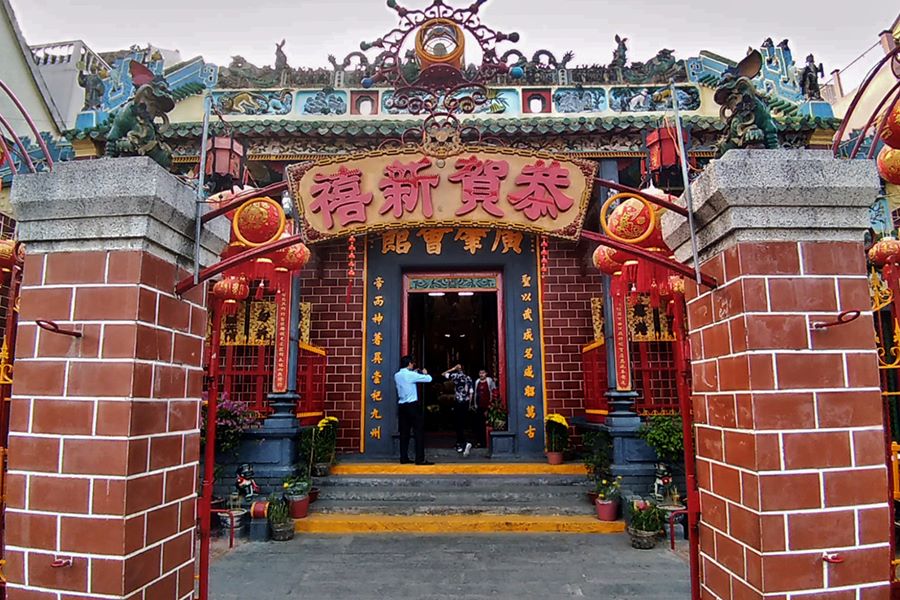Ong Temple, also known as the Canton assembly hall of Can Tho, is a sacred site in the Mekong Delta region, characterized by its enduring Chinese architecture. With over 120 years of history, the temple is a prominent spiritual destination for tourists visiting Can Tho with Vietnam B2B DMC in India. The Mekong Delta region is renowned for its idyllic rural vistas, eco-tourism destinations, and cultural variety. Among the region’s must-see cultural and religious sites is the Canton assembly hall of Can Tho. This temple once served as a sacred space for the Chinese community in Can Tho, and its Chinese architectural style has been impeccably preserved to this day.
Overview of Canton assembly hall of Can Tho Vietnam
The Canton assembly hall of Can Tho, also called Ong Temple, was built in the 19th century by the Chinese community in Can Tho. It was dedicated to Guan Yu, a famous Chinese general revered as a god of loyalty and righteousness. The Canton assembly hall of Can Tho was constructed in 1894 on an area of 532 square meters, taking two years to complete. This place used to be an assembly hall for the Chinese people from Guangzhou and Zhaoqing (Guangdong, China).
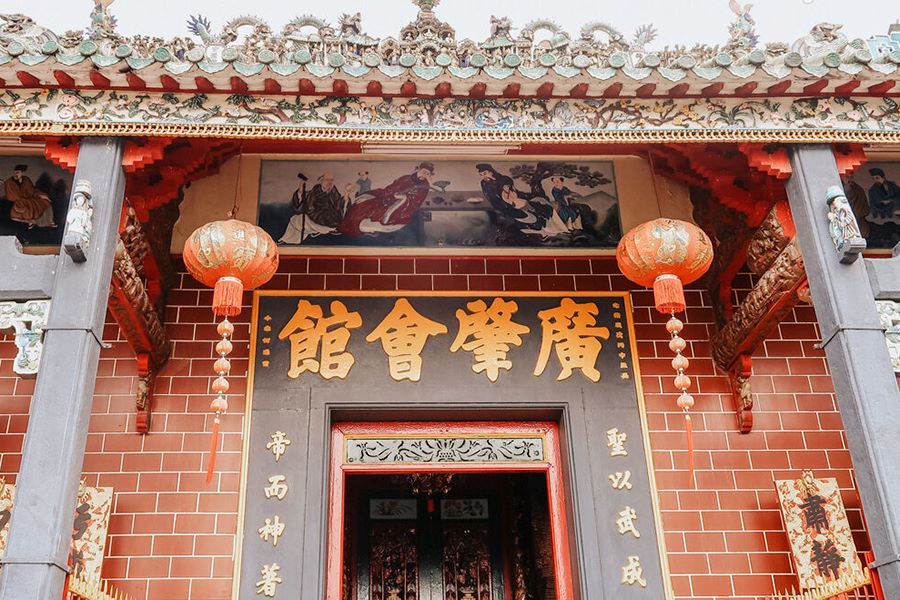
Best things to do in Ong Temple Can Tho
Since the Canton assembly hall of Can Tho is an important historical and cultural work in this bustling city, there are plenty of interesting activities to do here:
Explore the unique architecture of the temple
Ong Temple’s architecture is a blend of Chinese and Vietnamese styles, featuring bright colors, intricate carvings, and traditional motifs. It is a beautiful architectural marvel that follows the principle of yin and yang in every detail.
The exquisite exterior of the sacred temple
- The gateway: The gateway of the Canton assembly hall of Can Tho is both colorful and sacred. It has a unique entrance with a horizontal lacquered board and red lanterns. The gate and fence are adorned with painted columns connected by iron bars, featuring statues of unicorns and fish turning into dragons.
- The roof: The dark green glazed roof reflects ancient Chinese architecture. The roof is decorated with statues of dragons, phoenixes, and people holding the sun and moon. Underneath, there are wooden columns arranged in six rows, each painted red and supported by monolithic stone feet. There is also a complex truss system.
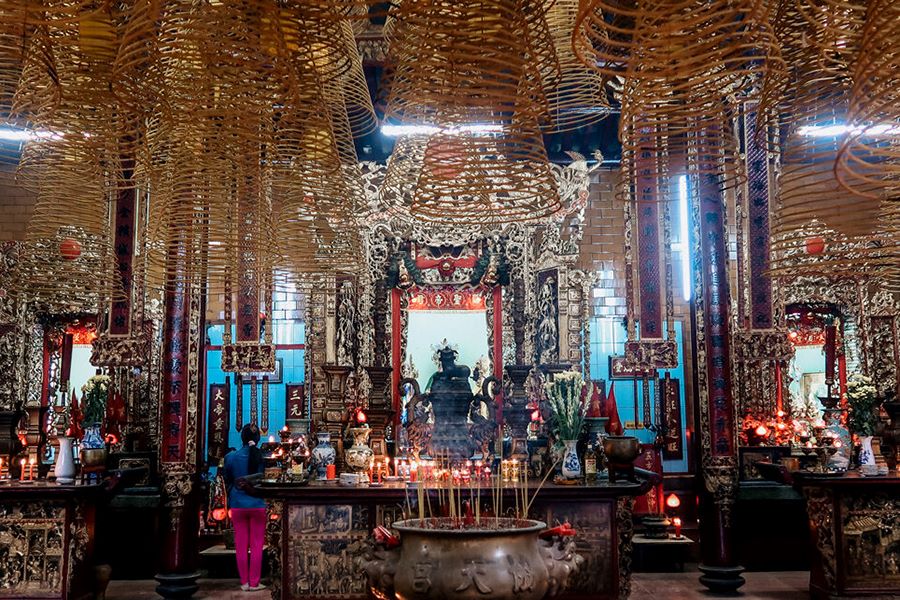
The interior where worship activities take place
- The front hall: Stepping through a narrow yard, tourists will enter the front hall of Ong Temple. The hall features a folding screen with intricate carvings and a wooden board with the temple’s name. To the left, visitors can worship General Ma Tien and his red horse, and to the right, they can worship Phuc Duc Chinh Than and other mighty gods from ancient times.
- The main hall: The main hall of the temple is the most important part, featuring crossbeams that overlap each other, along with statues of Guan Yu, Dong Vinh, Tai Bach Tinh Quan, Mazu, and Guan Yin. The reliefs in the temple feature quotes from Chinese myth and history, made by the hands of skilled artisans.
The temple is home to many pieces of art, including bronze bells, horizontal lacquered boards, and parallel sentences, all carved by techniques that required effort and time.
Enjoy religious festivals in Ong Temple
The Canton assembly hall of Can Tho hosts several Chinese cultural festivals throughout the year, including the Ong Temple Festival (on the 24th day of the 6th lunar month), the Empress of Heaven Festival (on the 23rd day of the 3rd lunar month), and the Ong Bon Festival (on the 15th day of the 3rd lunar month). These festivals are vibrant and colorful, featuring dragon dances, lion dances, and other cultural performances.
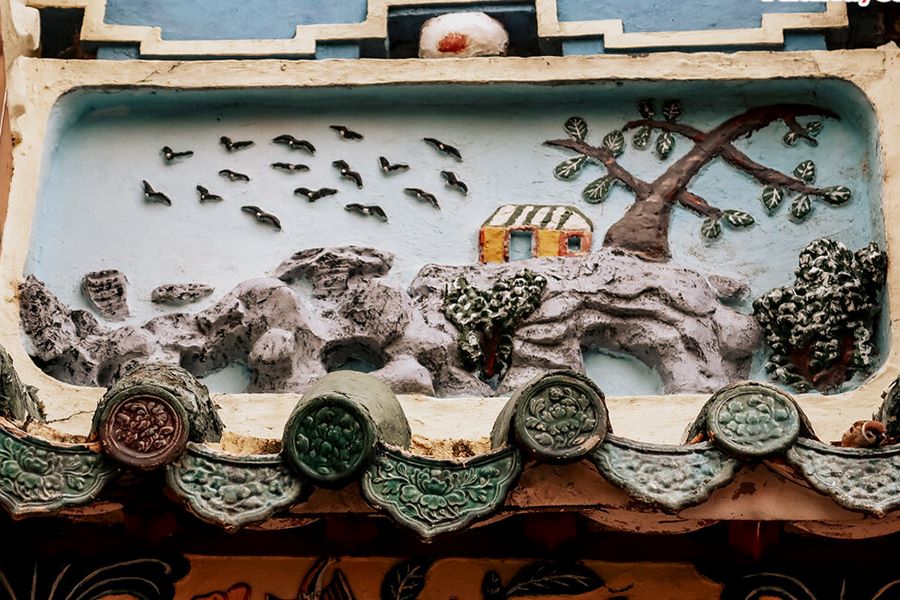
Try the fortune sticks for fortune-telling
When you visit the Canton assembly hall of Can Tho in Vietnam, be sure to witness the intriguing tradition of shaking the “xam” sticks, also known as fortune sticks. This cultural practice offers insight into one’s destiny, love life, career prospects, and potential for children, making it a popular attraction for tourists and Buddhist pilgrims.
Some notes for your excursion to Ong Temple
Dress appropriately: Visitors should dress modestly, covering their shoulders and knees. Avoid wearing shorts, tank tops, or revealing clothing.
- Be quiet: The Canton assembly hall of Can Tho is a place of worship, so visitors should keep their voices down and refrain from using mobile phones or other electronic devices.
- Please take off your shoes: Visitors are expected to take off their shoes before entering the temple for respect and hygiene.
- Do not touch the statues or artifacts: The temple’s statues and artifacts are sacred and should not be touched or moved.
- Respect the local customs: Visitors should respect the local customs and traditions, including making offerings and burning incense. If you are unsure about the proper etiquette, observe the locals and follow their lead.
- Keep a close watch on your belongings, especially if you visit the temple during the festivals.
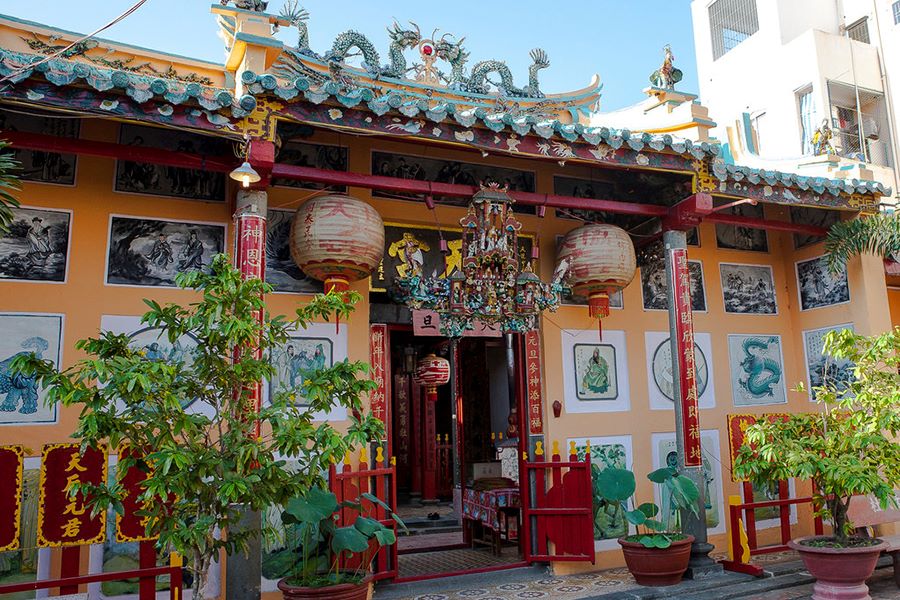
The Canton assembly hall of Can Tho is a must-visit attraction for those interested in history, culture, and spirituality. Here, visitors can gain a deeper appreciation of this unique and fascinating site. So, be sure to include visiting this place on your bucket list of things to do in the Mekong Delta!

